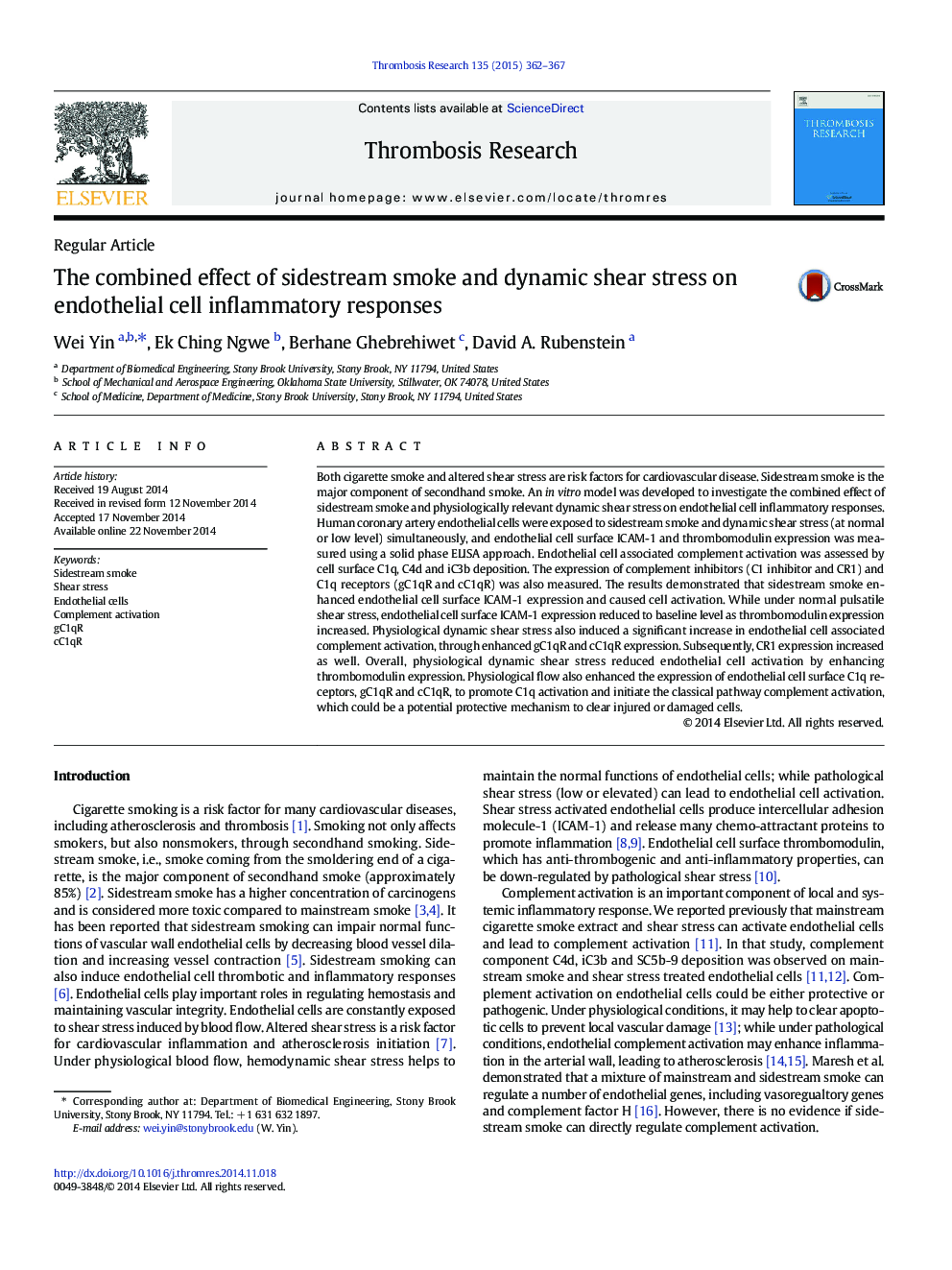| کد مقاله | کد نشریه | سال انتشار | مقاله انگلیسی | نسخه تمام متن |
|---|---|---|---|---|
| 6000728 | 1182936 | 2015 | 6 صفحه PDF | دانلود رایگان |
- Sidestream smoke can cause endothelial cell activation.
- Thrombomodulin can protect endothelial cells from sidestream smoke.
- Complement activation helps to clear damaged endothelial cells.
- Complement activation is at least partially mediated through gC1qR and/or cC1qR.
Both cigarette smoke and altered shear stress are risk factors for cardiovascular disease. Sidestream smoke is the major component of secondhand smoke. An in vitro model was developed to investigate the combined effect of sidestream smoke and physiologically relevant dynamic shear stress on endothelial cell inflammatory responses. Human coronary artery endothelial cells were exposed to sidestream smoke and dynamic shear stress (at normal or low level) simultaneously, and endothelial cell surface ICAM-1 and thrombomodulin expression was measured using a solid phase ELISA approach. Endothelial cell associated complement activation was assessed by cell surface C1q, C4d and iC3b deposition. The expression of complement inhibitors (C1 inhibitor and CR1) and C1q receptors (gC1qR and cC1qR) was also measured. The results demonstrated that sidestream smoke enhanced endothelial cell surface ICAM-1 expression and caused cell activation. While under normal pulsatile shear stress, endothelial cell surface ICAM-1 expression reduced to baseline level as thrombomodulin expression increased. Physiological dynamic shear stress also induced a significant increase in endothelial cell associated complement activation, through enhanced gC1qR and cC1qR expression. Subsequently, CR1 expression increased as well. Overall, physiological dynamic shear stress reduced endothelial cell activation by enhancing thrombomodulin expression. Physiological flow also enhanced the expression of endothelial cell surface C1q receptors, gC1qR and cC1qR, to promote C1q activation and initiate the classical pathway complement activation, which could be a potential protective mechanism to clear injured or damaged cells.
Journal: Thrombosis Research - Volume 135, Issue 2, February 2015, Pages 362-367
